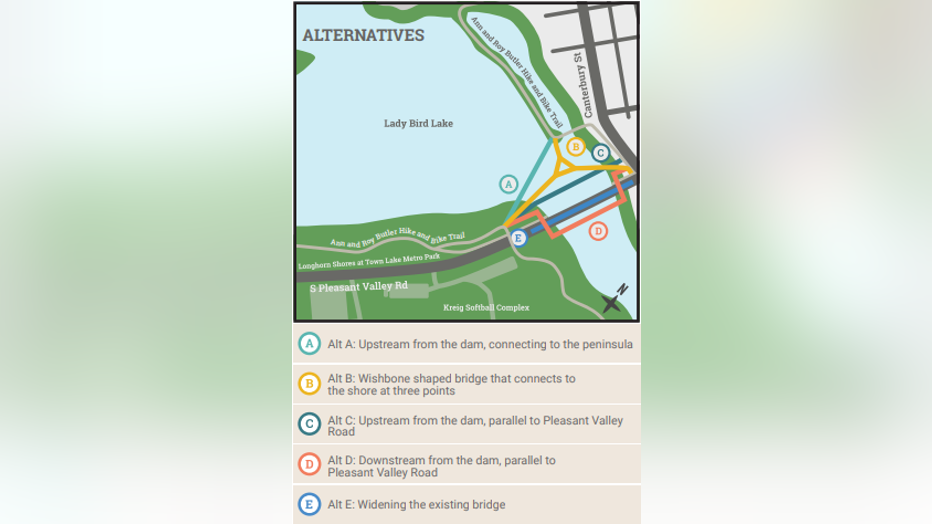New pedestrian, bicycle bridge over Lady Bird Lake to be completed by 2026
AUSTIN, Texas - After collecting survey responses and opinions from Austin residents, a plan for a new pedestrian bridge over Lady Bird Lake near Longhorn Dam is moving forward.
Austin Public Works, Austin Transportation and Austin Parks and Recreation are all teaming up to plan, design, and construct the new bridge.
The project's preliminary engineering and planning began in 2018. Since then, two public meetings have been held and a public survey on bridge options was presented to the public.
Five different bridge design options were presented. Of the nearly 2,000 residents surveyed, 742 of them chose the wishbone shaped bridge that connects to the existing Butler Hike and Bike trail.

Alternative B was chosen by 41% of those surveyed. It is a wishbone shaped bridge connecting to the shore at three points.
The chosen bridge will connect to the trail at three points: Longhorn Shores, Holly Shores and the unnamed peninsula near Holly Shores, the city says. It will span nearly a half-mile and will create a north-to-south connection on the East side of the lake.
An open house and virtual public meeting was held earlier this year, providing the public with information on updates of the project at 30% design completion. The project team presented a list of guiding principles and design elements that consider community feedback.
The feedback has resulted in the additions of the following elements to the bridge project:
- A shaded plaza: The plaza will be located at the center of the bridge, and will feature seating, lighting, plants and bicycle racks.
- New trail underpass: The new underpass will accommodate more users, address drainage issues and add lighting.
- Removal of older elements: The existing parking lot at Holly Shores will be removed to allow room for the new bridge and the existing pedestrian bridge will also be removed.
The project team will also follow a list of guiding principles created as a result of community feedback. That list includes a focus on safety and accessibility, creating convenient connections, enhancing the natural environment and landscape, creating a friendly and engaging desk space and designing the bridge to be cost-efficient.
Following the completion of the design phase, the project will move into construction around 2023, with an anticipated completion by 2026.
The project's preliminary engineering report, which was released in July 2020, was funded by several city sources, including funds from the 2016 Mobility Bond. The design and construction phases are estimated to cost around $15 million and will be funded by the 2020 Mobility Bond and other city funding sources.
To stay up to date on this project and learn more, click here.

